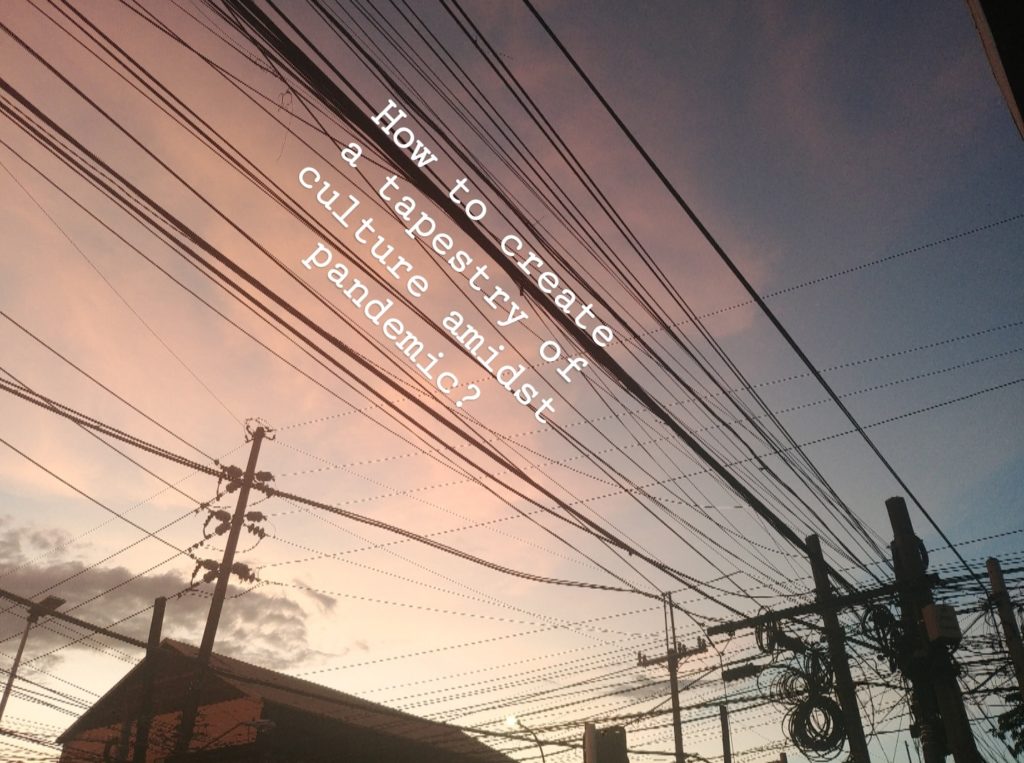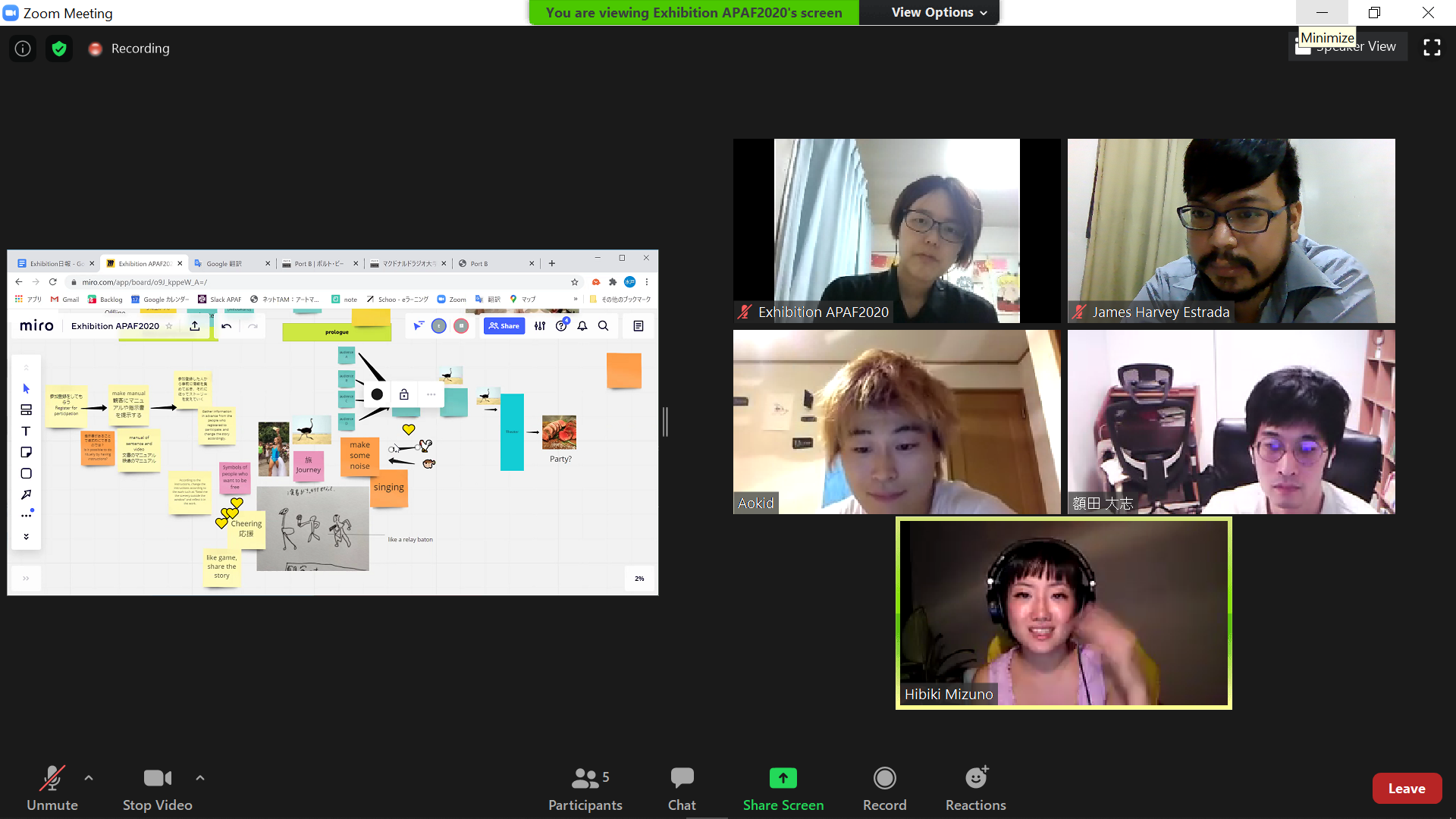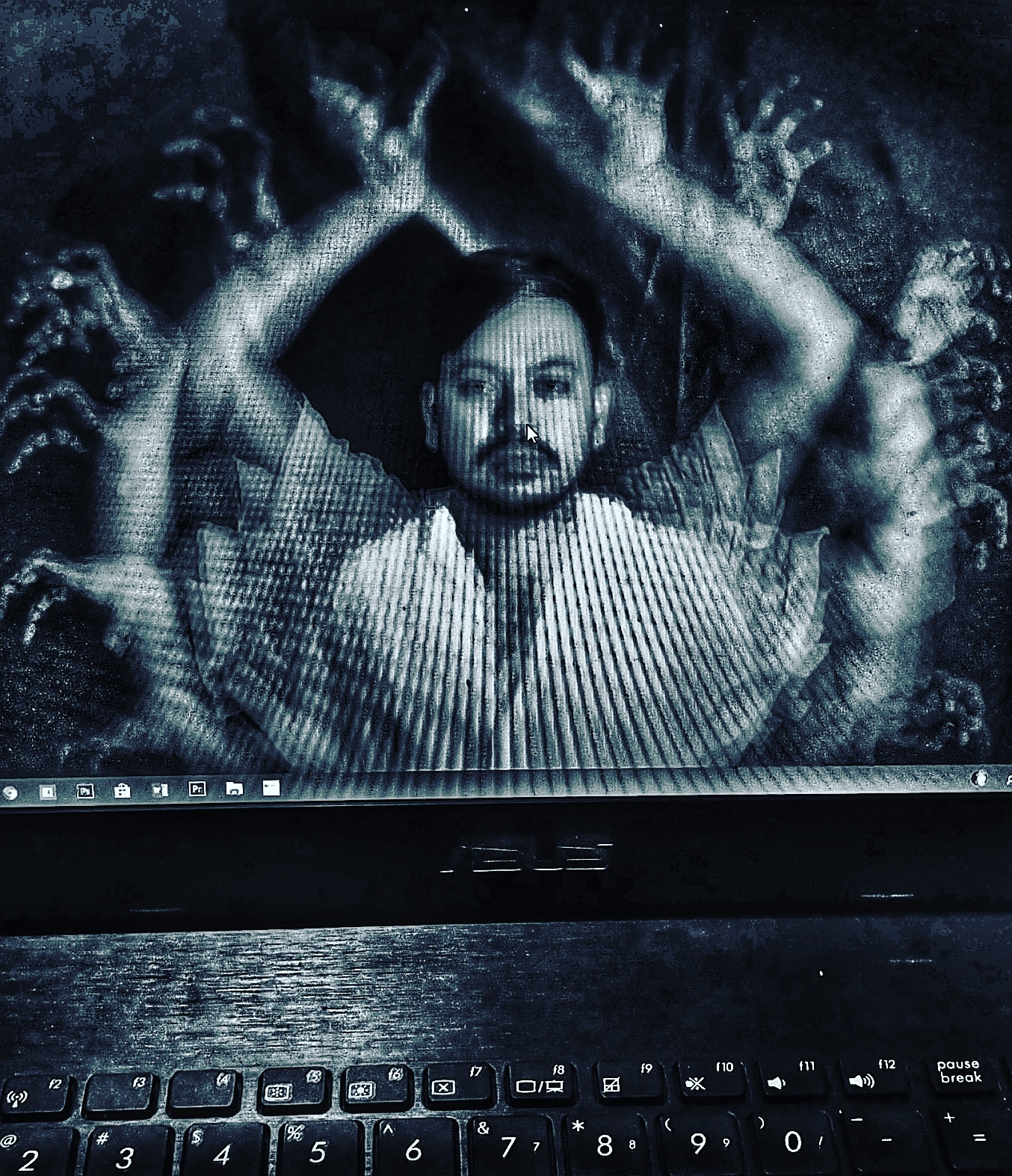
Day 100 of Community Quarantine in the Philippines. A hot afternoon in Quezon City.
I opened my window to catch some fresh air, fixed my intermittent Internet connection while a cute sparrow chirped outside my window. It happily sang and flew outside, enjoying its freedom. I was envious. As I moved my router to find a signal, wiping my face as sweat fell onto my newly washed and roughly ironed polo long enough to hide my boxer shorts. I told myself, “Today I am also opening my window to fly. I am going to Japan!”. I ran my fingers through my hair, and quickly glanced at the mirror as I organized my desk. I sat up straight, opened my laptop, and clicked the Zoom link – the new passport to travel. And I flew to Japan.
Before the Pandemic. January.
My head was leaning on the small window of the service shuttle, looking at the majestic Mount Mayon in the province of Albay. I was there with the film crew to do an ocular, film jargon in order to find and evaluate a location for a new film project. I opened my window and was in awe at the beauty of Mount Mayon when I received the good news: that I will be part of this year’s Exhibition Team for the Asian Performing Arts Farm. It was unexpected news even after attending the APAF Lab last year with wonderful artists from Japan and Southeast Asia. I shut the van window and closed my eyes. I remembered Mount Fuji, that shot of its peaks on a plane to Japan last year. I was ecstatic; I have a chance to present a new international collaborative work. The year has just begun and I thought that this will be a great year for me.
In my mind, I’m walking along the streets of Ikebukuro, turning toward the Tokyo Metropolitan Theatre to rehearse, to engage in conversations on creating intercultural work about Asia. I imagined the rehearsals in a nice space in Tokyo where we could explore possibilities with our different languages and bodies. I can feel the warmth of the room as we all passionately rehearse and move together. We would enjoy some Japanese tea and chocolate during breaks. We’d exchange smiles, awkward hugs and engaging laughter as we discuss the rehearsal process during dinnertime. We would share the space and our bodies would come together as our minds intertwine for a new production. I cannot wait to fly!
Days passed by and email exchanges with the APAF team began. I looked forward to every email, the excitement building up every time we exchange ideas about the project. I started planning out my research trip to Japan and shared the theme for the performance. Everything was smooth and positive and the initial research trip to Tokyo was set in May. It was some good two months of planning from January to early March until COVID-19 happened.
The pandemic started and countries started implementing lockdown and quarantine restrictions. The world was put into a halt together with my dream to fly.
A Moment of Silence
For a month, the emails stopped. Everything was uncertain. At that moment, there were canceled theatre shows and even my work on TV and Film was put on hold. The spread of the virus was quick and in a snap of a finger, our lives changed. My dream of creating new works with Asian artists seemed impossible. Artists’ mobility was challenged, uncertainties in the performing arts started to creep in. Some artists started the conversation about migrating performances online. It was something that has neither been done nor rarely explored. How can live performances conquer cyberspace? Is this still theatre? A lot of questions arose from artists problematizing how to utilize the internet and social media as a new space for a theatrical production.
It was early April; I got an email that the project will continue but this time it will be online. Without a doubt, I said yes to the challenge. I headed on to my computer and revised the theme and research plan. It is time to craft the online migration of the exhibition but how? I stared blankly at the empty screen of my laptop as I listened to the news of rising numbers of active COVID-19 cases.
Days later, I got a message from a colleague, one of our cinematographers contracted the virus. I was worried and panicked. A few weeks after, he died. It was then that I realized, the process is not going to be easy. I whispered a little prayer and in that silence I promised to create regardless of the conditions. I know my dear friend in heaven would be happy if we continue with our lives even if we are locked in our homes. I opened my window that night and looked at the stars in a clear night sky.
On Virtual Room and Communication Styles
Zoom became the new meeting room and rehearsal studio. The rituals of going into the space to create changed. Meetings were held in the comfort of our own homes, in the living room – even in bedrooms if you have your laptop and Internet. During my first meetings, I wore my best polo to hide my boxers. This process of online meeting, while your body is in your bedroom, will largely affect the artists’ work.
What happens in the physical space and cyberspace impacts the artist’s psyche of online work. I felt something was missing in the process. It was not bad working at home; it was convenient. But the time spent in conditioning our mind and body to work for the stage was missing. I began to appreciate the commute to and from work, walking inside a building, a few minutes spent inside the washroom and a little sashay in the corridors before entering the meeting room. What you do before entering the zone of creativity requires a certain ritual in owning a space. A sip of coffee before rehearsal, a little chat with friends and getting a sniff of that distinct smell of the rehearsal studio, meditating in the corner of the room as you deeply inhale and exhale before the work starts – all these rituals will put you in the zone of creation.
But my home had become my studio. I get up from my bed, turn my laptop on and with a few clicks, I am in the meeting room. So, I realized, it’s about time to create new rituals to motivate myself to create. I created my new online meeting rituals: nowadays I taking a bath and listening to Japanese songs thirty minutes before opening Zoom helped me internalize that I will be talking to Japanese artists.
Language is also another important element in online international collaboration. Since the meeting conversation gets translated from English to Japanese and vice-versa, there are adjustments in communication styles. In this intercultural collaboration, work process articulation and context are utmost important. Listening and understanding the cultural context and non-verbal cues will help you connect deeply.
Since everybody is on Zoom and the camera angle is limited, non-verbal communication is diminished. Thus, the need for you to explain your thoughts further and be keen on listening to your collaborators. Most of the time, we are afraid of “dead air” but I realize pauses are important too. That long pause of waiting for the other people to reply to your thoughts had become a sign of respect. It gives off the idea that you will wait and listen when they are ready to speak.
With these online work conditions and communication challenges, we can make this project even more interesting and exciting. Making an online intercultural work is like carefully weaving thoughts and ideas together and making sure every idea is acknowledged. Understanding the limits of technology and Internet connection can betray you sometimes, though. It takes everyone to create a safe and comfortable space for online creation. Smiling beyond Internet problems and consistently asking “Can you hear me?” “Can you see my screen?” “Did I freeze?” is part of the adjustment process.
I remember that one time when my internet connection was so bad that I kept on logging out of Zoom. We then realized that maybe we should stop using our cameras to lower the bandwidth consumption. It worked! Everyone agreed to go on “video distancing” mode just for me to stay connected. Constantly finding ways to make this online collaboration work despite the limitations and technological challenges became the norm.

Online Relationship with Japanese Collaborators
Since our online work will push through, it is time to search for collaborators who are willing to test the possibility of online creation. For this, I was most interested in working with a choreographer and musician. I was keen to know how choreography and music practice can migrate online. Finding my collaborator also became research on the practice of Asian artists in this time of pandemic and their view of online work. I had “getting-to-know” Zoom meetings with talented artists from Japan, Indonesia, Malaysia, Taiwan and China. It was like a dating game. We talked in the hopes of finding and understanding each candidate, much like choosing a suitable partner. Eventually, these collaborators became part of the growing exhibition family.
I remember telling our communication director Nobuko Aiso that creating work with collaborators is like making a baby. The collaborators will nurture an idea, meticulously constructing the structure and give birth to an output. A delicate process of mutual understanding, digging deep on each creative process, and sharing of contexts until we come up with a final output while the APAF staff serve as close relatives or guardians with parent-like duties assisting the growth of the relationship until we deliver the final work.
After more than a month of Zoom “dates,” we decided that I will be working with two equally brilliant Japanese artists: talented musician and theatre director Masashi Nukata and a dynamic choreographer and performer Aokid.
Moving Forward and Diving into the Unknown
As of writing, we just finished the soft structure of the work-in-progress performance exhibition for October. We will start our online rehearsals soon. I am more than excited to finally move the structure and meet performers for the online work.
Creating an international collaboration amidst this pandemic is a challenge. The COVID-19 active cases rise each day. We face cultural and language barriers along with Internet connectivity issues and gadget limitations. At a time when artist bodies are immobile and locked at home and the only window of connection to reach out and collaborate is the small square screen of our laptops and mobile phones, it’s time to dive into the vast possibilities of online collaboration.
A week ago, news came that some of my friends and colleagues are sick and quarantined. Some of them harbored headaches, fever and loss of smell and later on, tested positive for COVID-19. We had a “COVID-scare” in my apartment when one of my housemates showed symptoms of the virus. For the first time, a deafening silence filled my space and an eerie feeling descended in the air. My housemate later on, tested negative for the virus. These conditions made me acknowledge the depressing state of this pandemic and made me aware that it is not easy to create.
There were moments that I stopped working. I cannot deny the anxiety that comes with the pandemic; I feel so little, helpless, and tied up in this situation. I have been staying home for months and I wonder how the people in power are handling this health crisis while we, artists, are powerless, trying to create with our small voices, knitting some stories of hope and solidarity to survive. When I open my window and look at the sky, I see sparrows flying and I wish and pray we could be free again.
Are we going to be normal again? Nobody knows if we can return to our normal ways or maybe this pandemic has led us to a new world. The crisis magnified our flawed systems and made us realize the importance of things we usually ignore.
We are still facing this paralyzing coronavirus pandemic but what keeps me sane and helps me move on with life is our ability to open these windows of possibility online. Windows that will make us connect, windows and platforms to create beyond borders and relive our shared humanity. It is in solidarity and creating strong bonds of relationship that we can heal, persevere and survive. When all our creative spaces are shut down and locked, we come together virtually and dive into the known in search of new spaces and create new ways to connect and create. We create more windows of unending possibilities beyond any crisis.
As we open more windows and as we adjust to the new norms, maybe we will be opening new doors of possibility. Doors that will lead us to a portal of new ways of interaction, creation and onto a better society.
Right now, all I can do is to rehearse and think of the future as I watch this cute little sparrow gliding outside my window. Inside, I fly to Japan online with my roughly ironed polo and comfy boxer shorts in the comfort of my bedroom.



